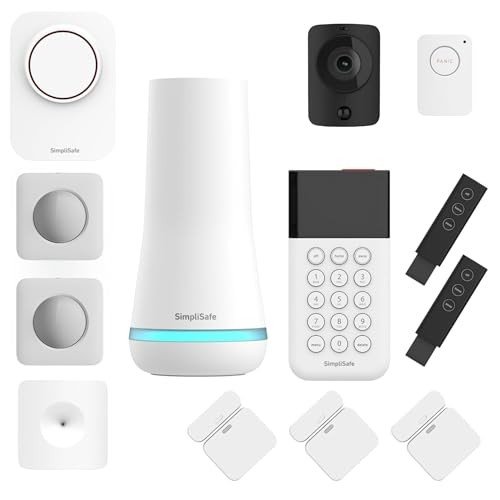10 Basics On Buy Bathroom Lighting UK You Didn't Learn At School
A Comprehensive Guide to Buying Bathroom Lighting in the UK
When it comes to designing or renovating a bathroom, lighting is often an afterthought. Nevertheless, the ideal lighting is essential for performance, safety, and aesthetics in this intimate area. In the UK, a variety of options are available for bathroom lighting, ranging from ambient lighting to job lighting, and accent lighting options. This guide will check out the numerous kinds of bathroom lighting offered in the UK, what to consider while buying, and some often asked questions to assist homeowners in making notified decisions.
Types of Bathroom Lighting
1. Ambient Lighting
Ambient lighting is the primary source of light in any bathroom. It provides overall illumination and creates a comfy environment.
- Ceiling fixtures: Flush mounts or enclosed fixtures that supply broad lighting.
- LED panel lights: Recessed or mounted alternatives that offer a modern appearance.
2. Task Lighting
Job lighting is vital for carrying out particular activities in the bathroom, such as shaving or using makeup.
- Vanity lights: Mounted above or beside mirrors to supply sufficient brightness.
- Downlights: Adjustable fixtures that can target particular locations, such as sinks or counters.
3. Accent Lighting
Accent lighting includes a decorative element and highlights architectural functions, artwork, or plants in the bathroom.
- Wall sconces: Decorative fixtures that include character and can be positioned at numerous heights.
- LED strip lights: Flexible and versatile, placed under cabinets or along racks for a modern touch.
4. Decorative Lighting
Decorative fixtures serve both purpose and style. They can be a focal point in your bathroom design.
- Chandeliers: Ideal for larger restrooms, providing beauty and appeal.
- Statement pendant lights: Uniquely designed lights that can boost the decor.
5. Natural Lighting
While not a specific fixture type, natural light can enhance the bathroom environment and decrease the requirement for artificial lighting.
- Skylights: Provide innovative natural light services.
- Windows: Ensure personal privacy while using sufficient lighting throughout the day.
Table: Key Features of Bathroom Lighting Fixtures
Lighting Type
Function
Style
Placement
Energy Efficiency
Ambient Lighting
General illumination
Different designs
Ceiling fixtures
Moderate to High
Job Lighting
Specific tasks (e.g., makeup)
Modern to traditional
Above or next to mirrors
Moderate to High
Accent Lighting
Emphasizes, decoration
Decorative styles
Walls or beneath shelves
Moderate
Decorative Lighting
Aesthetic appeal
Distinct styles
Central points in the room
Low to Moderate
Natural Lighting
Daylight source
N/A
Skylights or windows
N/A
Elements to Consider When Buying Bathroom Lighting in the UK
1. Safety Standards
In the UK, particular safety policies need to be fulfilled for bathroom lighting setup. Look for lighting fixtures that abide by the IET Wiring Regulations (BS 7671) and are rated for use in damp or moist locations. This is essential for fixtures placed near sinks or showers.
2. IP Ratings
The Ingress Protection (IP) rating shows how resistant a component is to wetness. Bathrooms usually need lights with an IP rating of a minimum of IP44 to guarantee security from splashes of water.
- IP20: Not suitable for restrooms
- IP44: Suitable for zone 2 locations
- IP65: Suitable for zone 1, can be used in shower enclosures
3. Style and Aesthetics
Consider the general style of your bathroom while choosing lighting. Whether traditional, modern, or minimalist, your fixtures should match the décor.
4. Brightness and Bulbs
Think about the type and brightness of bulbs. LED bulbs are popular for bathroom lighting due to their energy performance and durability. Go with warmer tones for a relaxing atmosphere, and guarantee adequate brightness, usually determined in lumens, particularly around mirrors.
5. Adjustability
Think about adjustable fixtures which permit versatile lighting. Dimmable options can assist produce the ideal environment while also increasing functionality.
6. Budget
Set a clear budget plan beforehand. The cost of bathroom lighting differs extensively— from affordable fixtures to designer choices. Ensure to consider setup if needed.
7. Eco-Friendliness
With increasing awareness of environmental effect, consider environment-friendly choices. LED lights consume less energy and have actually longer life expectancies compared to traditional bulbs.
Regularly Asked Questions (FAQs)
1. What is the very best lighting for a small bathroom?
In little bathrooms, it is a good idea to use intense ambient lighting integrated with job lighting around mirrors. Wall sconces or mirror lights can conserve area while offering required illumination.
2. Can I use standard lights in the bathroom?
It is important to use lighting fixtures particularly created for bathrooms due to moisture and humidity. look at this website have appropriate IP ratings for security.
3. How high should I install bathroom sconces?
Bathroom sconces should ideally be set up around eye level, usually about 60-66 inches from the floor to successfully brighten the face without casting shadows.
4. What color temperature is best for bathroom lighting?
A color temperature between 2700K to 3000K is preferable, as it offers warm, welcoming light that complements complexion and creates a peaceful environment.
5. Is it required to have a dimmer switch in the bathroom?
While not essential, dimmer switches can improve flexibility, enabling users to change lighting levels according to tasks and activities, which can be especially useful in a multi-functional area.
Picking the best bathroom lighting in the UK requires mindful consideration of security, function, and design. By comprehending the different types of lighting, examining your needs and choices, and adhering to security standards, property owners can develop a well-lit, welcoming bathroom space. Armed with knowledge and awareness of present choices, anyone can brighten their ensuite oasis magnificently.
